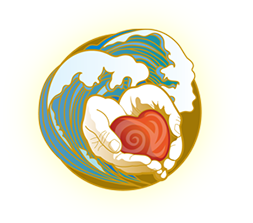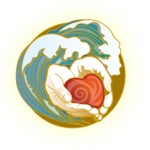Please visit Sophie Rieu’s website for more wonderful blogs: https://www.mycraniosacrallife.com/blog
Once again, I asked a few of my Biodynamic Craniosacral Therapy (BCST) colleagues and teachers in the field to contribute to my meandering journeys into the depths of our work as it relates to the fields of life.
On this occasion the orienting midline of creative formation was my last blog post The Crucible and the Wandering Line in which I explored the role of BCST in re-making or restoring Relationship (to borrow Rollin Becker’s habit of placing capital letters in front of words to enhance their scope and essence) in the troubled and challenging times we live.
At least this is what the responses I gratefully received reflected back to me in various ways.
My previous blog post discussed how BCST wanders away from our dominant cultural and societal paradigm, to awaken us back to our “human nature” as Scott Zamurut (1) says. For indeed, “The dominant paradigm has wandered away from the natural world.”
So it explored a number of layers, each pertaining to “a variety of fields. (…) Primarily the field around the body and the relational field co-created between client and practitioner that creates the protected and negotiated space within which the session occurs. Ray Castellino and others have expanded this field concept to the concentric circles of our various relationships and influences, such as the family field, the ancestral field, the cultural field and on and on.” says Margaret Rosenau (2)
I particularly like this image, borrowed from this Pre and Perinatal pioneer, of embedded widening circles nestled into one another. Within these formative and informative fields, various “layers of support” (one of Ray Castellino’s principles) line the cradle from which we make or shrink from relationship.
Susan Raffo (3) hones in on this intertwinement, “string theory and spiderwoman know the same thing, we are patterns that experience ourselves, that we are always connected…
(…) It helps me to remember that full aliveness, full embodiment is about connection – with ourselves, with the world of wildness and spirit, and with our kin. Connection with our kin is about those whose names we call with poetry and those who we avoid, who we are afraid of, don’t understand, or don’t see or don’t want to engage with. All of this is the full relational field.”

All these fields, energetic as well as corporeal could also be called bodies. We speak of a body of work so why not extend this word to the cultural, artistic, ancestral, societal spheres?
I feel it helps to ‘enliven’ fields into the complex, metabolic, forever transforming containers they are. It also helps to encompass our bodies within the larger breathing collective body that is “the full relational field” to which Raffo refers. Indeed our bodies’ aliveness interacts and evolves within a dynamic context, a space/time dimension, shaped and affected by a limitless number of influences, conditions. “Life is all about communication and relationship, and as that idea is followed further, it is absolutely inevitable that Life is BOTH never one but many, and never many but one (or to quote [Chilean biologist and philosopher Francisco] Varela, “not one, not two”). It’s a mistake to think of the human body as a single entity. That idea (of an isolatable undivided human entity) removes it from the ecosystem that it requires to even exist; and also gives a very poor sense of the diversity and variability of the internal ecosystem – the collection of cells, biota, limbs, organs, and so on that intelligently cooperate with each other to make a viable and responsive organism,” explains Andrew Cook (4).
(…) “In the Talmud there is a line that goes something like “beside every blade of grass is an angel that whispers ‘Grow! Grow!'”. If you then consider a clump of grass or a field or a savanna what happens to the angels? I believe that Varela’s “not one, not two” answers that. If you look at something at one scale, you see an identity because the modern way of seeing is to id-entify and separate “things” into separateness-es. A small field of grass may be part of a bigger landscape – it has a separable field identity and is also part of something greater (and also has individual blades of grass). In the same way the body and the human being can be viewed in different contexts and different scales, each of which is true.”

What is life if not this constant enlisting of relationships experienced from our bodies hosting other bodies within the greater contextual historical collective body? BCST mediates a “conversation”(3) with this wildly dynamic Life, with an aliveness we share alongside many other kinds and kin. It invites and ignites an awareness of what Dan Siegel calls “Mwe” (Me+We), or “intraconnection” as a path towards integration, towards a dynamic relational whole. Tanya Desfontaines(5) writes that, “Throughout my ongoing journey with BCST I have been challenged as a therapist to ‘reverse the polarity’ of my conditioned way of operating, so that rather than observing, measuring and analysing information from the physiology of my client, processing it with logic and reasoning and then producing a plan for treatment, I have learned to hold a much more open, receptive space for the Intelligence of the Breath of Life to work through the field, through me, and through my hands in relationship with the body of the client. Thus the work happens from the inside out, rather than from the outside in.”
Returning to the body as the primer, the blueprint, the essence of being. “We begin our listening with an inherent rhythm, a natural rhythm. Our physical body is a respiratory system so we begin with the breath, “not the breath of air but the Breath of Life.” Our listening is not random, our listening is directed to the rhythms of primary respiration that we …
Please read the rest of Sophie’s much longer beautiful blog here at her website: https://www.mycraniosacrallife.com/single-post/layers-fields-and-commons

